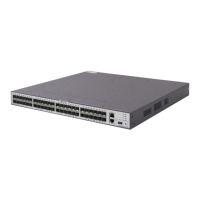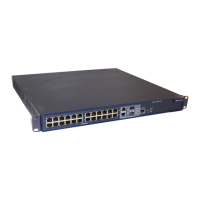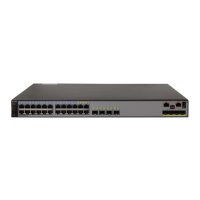Meaning of the label in Figure 13-94.
l On the equipment cabinet side, the label marked "A01-AC1" indicates that the power
cable is connected to the first AC power socket of row A and column 01 in the
equipment room.
l On the power socket side, the label marked "B01-AC1" indicates that the power cable is
connected to the first AC power socket in the cabinet of row B and column 01 in the
equipment room.
13.6 Appendix F Guide to Using Optical Modules
Common Faults of an Optical Module
1. An optical module is not completely installed in position.
If the optical module is not completely installed in position and the latch boss is not
secured, the device cannot identify the optical module. After the optical module works
for a long time, it will be ejected under external stress.
2. The optical receptacle on an optical module is contaminated.
If an optical module is not cleaned or protected properly, contaminants may accumulate
on the fiber pin in the optical module. As a result, the coupling efficiency is reduced,
optical signals are cut off, or even worse, the surface of the fiber pin is damaged
permanently.
3. An optical module is burnt.
If high-power optical signals (caused by an optical time domain reflectometer or self-
loop test) are transmitted through an optical module that is used for long-distance
transmission but no optical attenuator is used, the optical power will exceed the overload
power of the avalanche photodiode (APD). Then the optical module is burnt.
The preceding faults lead to temporary or long-term cut-off of optical signals; or even cause
permanent damages to the optical module, affecting communication services.
Measures to Prevent a Loosened Optical Module
1. When installing an optical module, insert it in position. If you hear a click or feel a slight
shake, it indicates that the latch boss is secured.
If the latch boss is not secured, the gold finger of the optical module is not in good
contact with the connector on the board. In this case, the link may be connected but
optical signals will be cut off or the optical module will be loosened when the optical
module is shaken or hit.
2. Figure 13-95 shows the release handle on an optical module when it is open and closed.
When inserting the optical module, make sure that the release handle is closed. At this
time, the latch boss locks the optical module. After the optical module is inserted, try
pulling it out to see if it is installed in position. If the optical module cannot be pulled
out, it is secured.
S2700&S3700&S5700&S6700 Switch
Hardware Installation and Maintenance Guide
13 Appendix
Issue 13 (2017-11-20) Huawei Proprietary and Confidential
Copyright © Huawei Technologies Co., Ltd.
171

